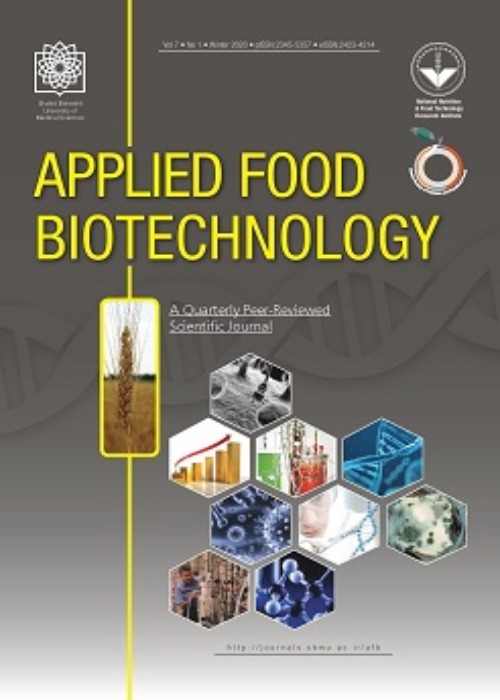Study on the Effect of Levulinic Acid on Whey-Based Biosynthesis of Poly(3-hydroxybutyrate-co-3-hydroxyvalerate) by Hydrogenophaga pseudoflava
Author(s):
Abstract:
Background And Objective
Production of polyhydroxyalkanoate copolyesters consisting of 3-hydroxybutyrate and 3-hydroxyvalerate units was for the first time studied using the production strain Hydrogenophaga pseudoflava based on sustainable raw materials. This strategy provides for increased cost efficiency in PHA production and in enhanced material quality.Material and
Methods
As a particularity, production of these poly(3-hydroxybutyrate-co-3- hydroxyvalerate) copolyesters was based on a novel substrate/co-substrate combination: whey permeate from dairy industry, on the one hand, acted as substrate for biomass and 3HB biosynthesis; on the other hand, levulinic acid, accessible from various renewable resources, was used as 3HV-related precursor compound. The experiments were carried out on shaking flask scale using defined nutrient media.Results and
Conclusion
Applied during nutritionally balanced growth of H. pseudoflava, levulinicacid displays drastic growth inhibition at rather low concentrations of 0.2 g l-1 (growth inhibition constant Ki = 0.032), which suggests the careful supply of this compound in the first phase of cultivation. Under nitrogen-free cultivation conditions, inhibition of the strain´s metabolism by levulinic acid was less pronounced. Here, poly(3-hydroxybutyrate-co- 3-hydroxyvalerate) concentrations up to 4.2 g l-1 and volumetric poly(3-hydroxybutyrate-co-3- hydroxyvalerate) productivities up to 0.06 g l-1 h -1 were achieved in dependence on the precursor supply. Investigating poly(3-hydroxybutyrate-co-3-hydroxyvalerate) composition in setups supplied with differently composed whey/levulinic acid mixtures revealed 3- hydroxyvalerate fractions in the polymer between 0 and 0.6 mol mol-1 . This study successfully demonstrates the feasibility of combined utilization of different waste- and by-products from food industry and agriculture for generation of value-added 2nd generation biopolymers.Conflict of interest: The authors declare no conflict of interest.
Keywords:
Language:
English
Published:
applied food biotechnology, Volume:4 Issue: 2, Spring 2017
Pages:
65 to 78
magiran.com/p1681425
دانلود و مطالعه متن این مقاله با یکی از روشهای زیر امکان پذیر است:
اشتراک شخصی
با عضویت و پرداخت آنلاین حق اشتراک یکساله به مبلغ 1,390,000ريال میتوانید 70 عنوان مطلب دانلود کنید!
اشتراک سازمانی
به کتابخانه دانشگاه یا محل کار خود پیشنهاد کنید تا اشتراک سازمانی این پایگاه را برای دسترسی نامحدود همه کاربران به متن مطالب تهیه نمایند!
توجه!
- حق عضویت دریافتی صرف حمایت از نشریات عضو و نگهداری، تکمیل و توسعه مگیران میشود.
- پرداخت حق اشتراک و دانلود مقالات اجازه بازنشر آن در سایر رسانههای چاپی و دیجیتال را به کاربر نمیدهد.
In order to view content subscription is required
Personal subscription
Subscribe magiran.com for 70 € euros via PayPal and download 70 articles during a year.
Organization subscription
Please contact us to subscribe your university or library for unlimited access!


